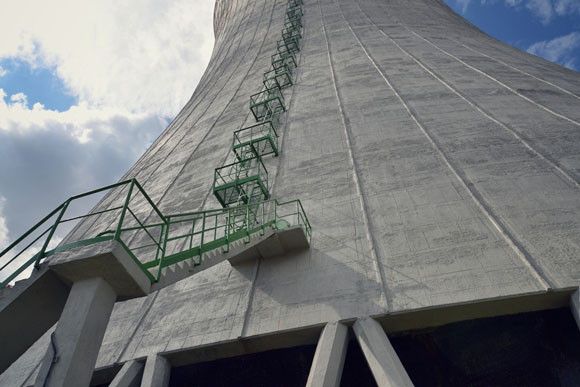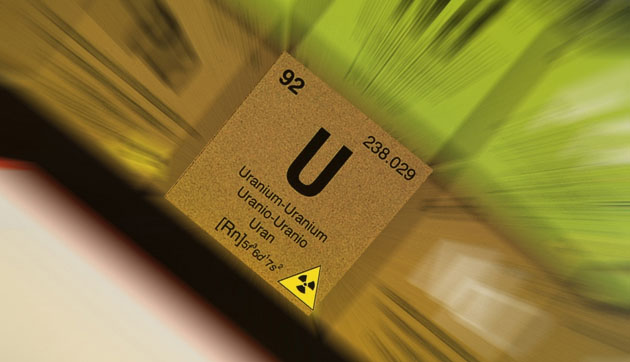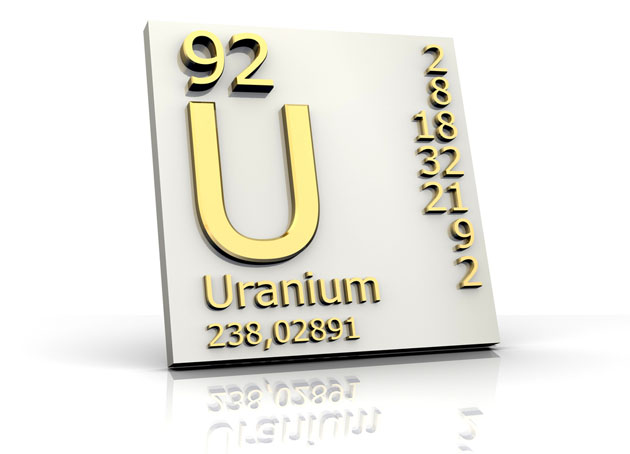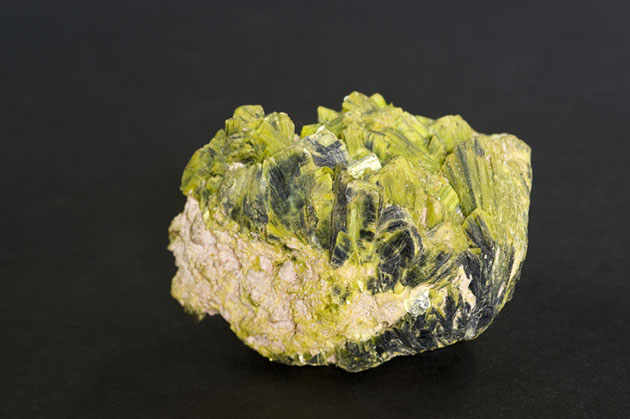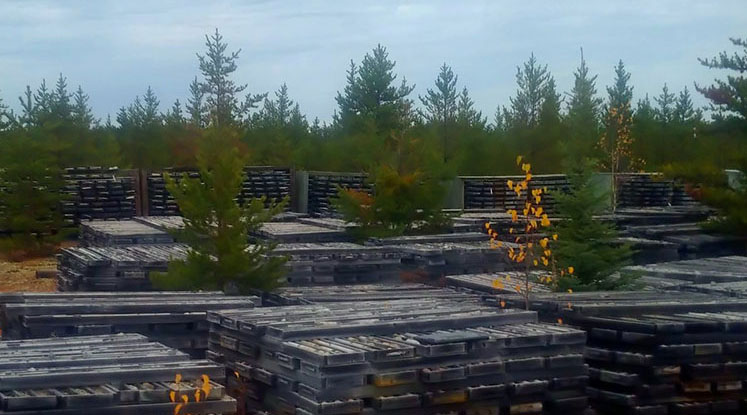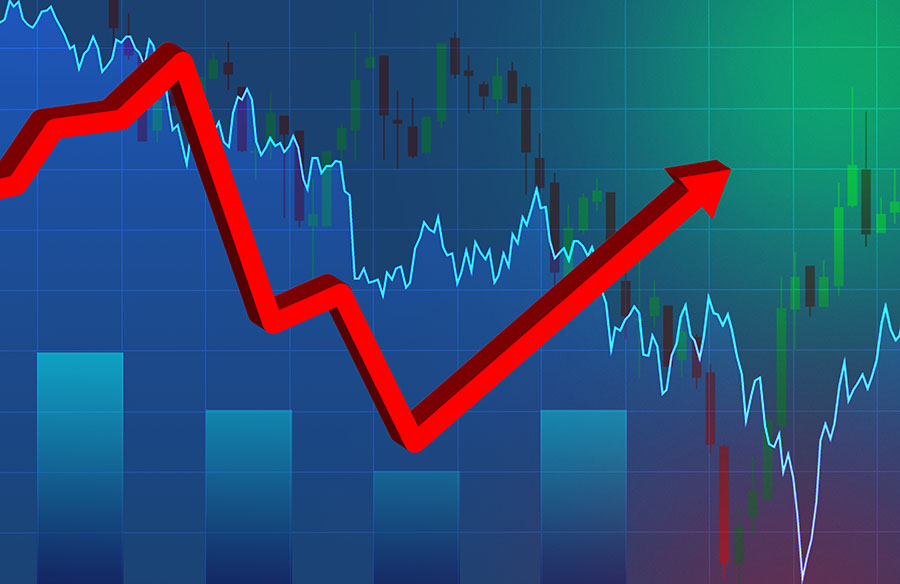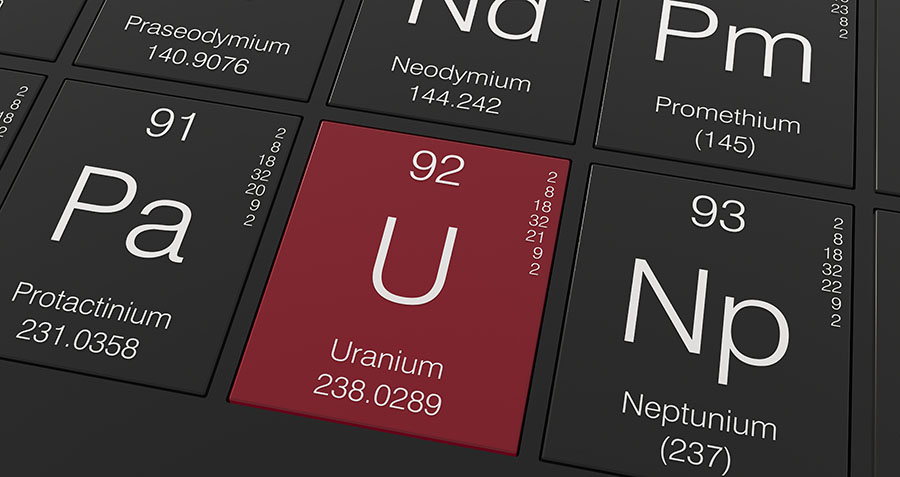TICKERS: BP, CCO; CCJ, DML; DNN, PDN, UEC,
Alka Singh: Uranium Future Intact
Interview
Source: JT Long of The Energy Report (3/17/11)
Even in the face of problems at Japan's Fukushima Dai-Ichi nuclear reactor following a massive earthquake and tsunami, Jennings Capital Mining Analyst Alka Singh takes a positive long-term view on uranium prices. In this exclusive interview with The Energy Report, Alka explains why uranium demand will increase globally in the next two years and offers a few companies poised to capitalize on that need.
The Energy Report: In the wake of the 9.0 magnitude earthquake and tsunami in Japan, how will both the reality of the problems at the Fukushima Dai-Ichi nuclear reactor and the media reports surrounding the events impact demand for uranium and uranium stock prices?
Alka Singh: Well, I don't see a lot of changes to my model because I'm still using a long-term uranium price of $75 per pound. But, there is so much market uncertainty that I put off initiating coverage on uranium names because of negative sentiments people have surrounding this sector. I think that all of this is more emotionally than fundamentally driven. Actually, this is a great buying opportunity to pick some of the better uranium companies with the solid assets and management teams. But, I'm just waiting for the market volatility to slow down.
TER: Are some companies going to do better than others based on their size, their stage of development or their geography?
AS: That's an excellent question. The companies that are already in production with all their permits and most of their long-term contracts in place are the best companies to own right now. The long-term contracts have already been signed, so the utilities are actually paying the set price for the next five to eight years. Typically, companies that are already in production tend to sell about 70% to 80% of their production on these long-term contracts. Only 10% to 15% of their production is sold on spot prices. So, companies already in production with low cash costs and long-term sales contracts in place are the types of companies that you would want to own.
TER: What are some specific companies you've been following that you think are going to do well?
AS: Some of the producers who will be doing well would be companies like Cameco Corp. (TSX:CCO; NYSE:CCJ) and Paladin Energy Ltd. (TSX:PDN; ASX:PDN) because they have long-term sales contracts and are in production. As they are already in production, they don't have the permitting risk in the equation. You may see regulators in some countries, including the U.S., take the news negatively. They will probably tighten the criteria that they look at before approving licenses for new nuclear reactors, which will impact demand for uranium.
The uranium equities are responding negatively as the market expects lower uranium demand in the coming years. It's just that markets will get scared, as they did when the oil spill happened last year. People will call for a moratorium and there will be a lot of uncertainty in the near future, which will be negative for the uranium companies. But, don't forget, when the oil spill happened BP Plc. (NYSE:BP; LSE:BP) share price dropped approximately 60%, and then recovered in six months.
TER: Why has the reaction in Germany, which is shutting down reactors, varied so much from countries like China and India, which are still moving forward with nuclear plans?
AS: Germany is taking preventive action. The country's suspending life extensions of 17 nuclear reactors that were supposed to shut down in 2021 originally but were extended by an average of 12 years based on the nuclear crisis in Japan.
In China, the China Environmental Minister came out and said that while the country had learned lessons from Japan, it would not change its plans for a nuclear renaissance. India also has talked about caution—not dramatic change—and is in the process of trying to acquire uranium from Australia. Together, China, India and Russia have 42 reactors currently under construction, another 82 planned and 210 proposed.
TER: Does the design make a big difference in the viability of the project?
AS: The three hydrogen pressure explosions that happened at the nuclear plants in Japan were in the exterior of the nuclear reactors. This disaster is actually much different from the Chernobyl disaster that happened in the Ukraine where no containment vessel was in place. The Japanese government has done a very good job of managing the situation. It could end up as a positive, proving that designs of nuclear reactors being built today are much better than the ones that failed during the Chernobyl crisis.
It's not as if the Japanese reactor exploded because of an operational failure. We are talking about a huge earthquake, followed directly by a tsunami. Even a nearby oil refinery burst into flames and collapsed. More countries may do stress tests and expanded permitting, which is time consuming and more costly. But, as of right now, I don't think you can say this event is an end to the nuclear renaissance.
TER: So, are you saying the impacts are going to be different in the short term versus the long term?
AS: That is true. The short-term reaction is obviously one of panic. Over time, people will realize that nuclear power is the only viable way to fulfill the world's energy requirement. Either you burn more fossil fuel and pollute your environment or you go for very expensive wind power and solar power. Hydropower is built out, basically. Nuclear power is still the cheapest. You can actually produce power at US$0.02 per kilowatt hour compared to coal at US$0.03, natural gas at about US$0.05 and oil at US$0.12 per kilowatt hour. So, what do you do? Do you pollute the environment or do you look for ways to build containment vessels that can handle this level of natural disaster? I still see the supply/demand fundamentals as very positive for uranium.
TER: In your last interview with The Energy Report, you were really positive about the prospects for uranium prices. At the time, they were in the $60–$70/lb. range. Obviously, that price has fallen in the last four days. Is this a short-term price impact or will we see long-term adjustments?
AS: Term markets are responsible for 80% of the total uranium sold annually, while spot markets purchase from 8%–12% every year. That's it—that's how small the spot market is. However, equities tend to react more to the spot market than the long-term market. The long-term prices have not changed; they are still at $73/lb. It is the short-term price that has fallen to $60.
The producers or companies actually signing long-term contracts right now will not be impacted by the spot price. Only hedge funds and traders—the guys who are afraid of what's going on in Japan and trying to make a short-term trading call—are shorting uranium equities on the assumption of a nuclear meltdown as 11 of the nuclear reactors (11 of the 54 operating nuclear reactors) in Japan are in the earthquake/tsunami impact zone. Long term, I think that these guys will start closing the short positions in the near future. It'll be similar to the oil spill situation with BP.
TER: If this is a short-term selloff of uranium shares, where do you see opportunities?
AS: This is a great opportunity to buy good uranium stocks for the long term. Short term, hedge funds could still short all of these uranium names without knowing which one is better just because they have the word "uranium" in the name. There could be still some tears in the market in the short term. However, if you find good companies that you like with good assets and management teams, this could be a great opportunity. I am talking about companies with good assets, low-cost production and maybe in-situ recovery (ISR) production, including Uranium Energy Corp (NYSE.A:UEC) and Uranium Resources Inc. (NASDAQ:URRE) in the U.S. Their cash costs would be under $25/lb. compared to conventional operations.
At Denison Mines Corp. (TSX:DML; NYSE.A:DNN), where the cost of production is about $45, you don't want to be long. Cameco would be my other go-to company. As one of the largest uranium producers, the company could gain a lot when the Highly Enriched Uranium (HEU) Agreement between the U.S. and the Russian Federation expires in 2013, leading to higher uranium prices.
In the U.S., 104 operating nuclear reactors need about 60 million pounds (60 Mlb.) of uranium per year. But the country produces only 4 Mlb., which leaves a gap of 56 Mlb. to be met by secondary sources, including the HEU Agreement. So, this is a good time to be long uranium producers/developers. Uranium prices had been recovering in the latter part of 2010 and early 2011 before the crisis happened in Japan. This gives investors the best opportunity to buy since the 2008 financial meltdown. I can understand why people are concerned; but for a risk taker, this is good high-reward opportunity.
TER: Thank you so much for taking the time to talk with us.
AS: No problem. Thank you.
Prior to taking a position as mining analyst at Jennings Capital, Alka Singh was the managing director and senior metals and mining analyst at Rodman & Renshaw in New York City for two years. Previously, Ms. Singh was a vice president covering the metals and mining sector in Canada at Merrill Lynch, and prior to that she was an associate analyst covering the gold and base metal companies at Orion Securities Inc. Ms. Singh holds an MBA from Schulich School of Business, York University in Toronto, Canada and a Bachelor of Science in geology from the University of Delhi in India.
Learn more about The Energy Report's uranium sponsors:
Want to read more exclusive Energy Report interviews like this? Sign up for our free e-newsletter, and you'll learn when new articles have been published. To see a list of recent interviews with industry analysts and commentators, visit our Expert Insights page.
DISCLOSURE:
1) JT Long of The Energy Report conducted this interview. She personally and/or her family own shares of the following companies mentioned in this interview: None.
2) The following companies mentioned in the interview are sponsors of The Energy Report: Uranium Energy Corp.
3) Alka Singh: I personally and/or my family own shares of the following companies mentioned in this interview: None. I personally and/or my family are paid by the following companies: None.
Alka Singh: Well, I don't see a lot of changes to my model because I'm still using a long-term uranium price of $75 per pound. But, there is so much market uncertainty that I put off initiating coverage on uranium names because of negative sentiments people have surrounding this sector. I think that all of this is more emotionally than fundamentally driven. Actually, this is a great buying opportunity to pick some of the better uranium companies with the solid assets and management teams. But, I'm just waiting for the market volatility to slow down.
TER: Are some companies going to do better than others based on their size, their stage of development or their geography?
AS: That's an excellent question. The companies that are already in production with all their permits and most of their long-term contracts in place are the best companies to own right now. The long-term contracts have already been signed, so the utilities are actually paying the set price for the next five to eight years. Typically, companies that are already in production tend to sell about 70% to 80% of their production on these long-term contracts. Only 10% to 15% of their production is sold on spot prices. So, companies already in production with low cash costs and long-term sales contracts in place are the types of companies that you would want to own.
TER: What are some specific companies you've been following that you think are going to do well?
AS: Some of the producers who will be doing well would be companies like Cameco Corp. (TSX:CCO; NYSE:CCJ) and Paladin Energy Ltd. (TSX:PDN; ASX:PDN) because they have long-term sales contracts and are in production. As they are already in production, they don't have the permitting risk in the equation. You may see regulators in some countries, including the U.S., take the news negatively. They will probably tighten the criteria that they look at before approving licenses for new nuclear reactors, which will impact demand for uranium.
The uranium equities are responding negatively as the market expects lower uranium demand in the coming years. It's just that markets will get scared, as they did when the oil spill happened last year. People will call for a moratorium and there will be a lot of uncertainty in the near future, which will be negative for the uranium companies. But, don't forget, when the oil spill happened BP Plc. (NYSE:BP; LSE:BP) share price dropped approximately 60%, and then recovered in six months.
TER: Why has the reaction in Germany, which is shutting down reactors, varied so much from countries like China and India, which are still moving forward with nuclear plans?
AS: Germany is taking preventive action. The country's suspending life extensions of 17 nuclear reactors that were supposed to shut down in 2021 originally but were extended by an average of 12 years based on the nuclear crisis in Japan.
In China, the China Environmental Minister came out and said that while the country had learned lessons from Japan, it would not change its plans for a nuclear renaissance. India also has talked about caution—not dramatic change—and is in the process of trying to acquire uranium from Australia. Together, China, India and Russia have 42 reactors currently under construction, another 82 planned and 210 proposed.
TER: Does the design make a big difference in the viability of the project?
AS: The three hydrogen pressure explosions that happened at the nuclear plants in Japan were in the exterior of the nuclear reactors. This disaster is actually much different from the Chernobyl disaster that happened in the Ukraine where no containment vessel was in place. The Japanese government has done a very good job of managing the situation. It could end up as a positive, proving that designs of nuclear reactors being built today are much better than the ones that failed during the Chernobyl crisis.
It's not as if the Japanese reactor exploded because of an operational failure. We are talking about a huge earthquake, followed directly by a tsunami. Even a nearby oil refinery burst into flames and collapsed. More countries may do stress tests and expanded permitting, which is time consuming and more costly. But, as of right now, I don't think you can say this event is an end to the nuclear renaissance.
TER: So, are you saying the impacts are going to be different in the short term versus the long term?
AS: That is true. The short-term reaction is obviously one of panic. Over time, people will realize that nuclear power is the only viable way to fulfill the world's energy requirement. Either you burn more fossil fuel and pollute your environment or you go for very expensive wind power and solar power. Hydropower is built out, basically. Nuclear power is still the cheapest. You can actually produce power at US$0.02 per kilowatt hour compared to coal at US$0.03, natural gas at about US$0.05 and oil at US$0.12 per kilowatt hour. So, what do you do? Do you pollute the environment or do you look for ways to build containment vessels that can handle this level of natural disaster? I still see the supply/demand fundamentals as very positive for uranium.
TER: In your last interview with The Energy Report, you were really positive about the prospects for uranium prices. At the time, they were in the $60–$70/lb. range. Obviously, that price has fallen in the last four days. Is this a short-term price impact or will we see long-term adjustments?
AS: Term markets are responsible for 80% of the total uranium sold annually, while spot markets purchase from 8%–12% every year. That's it—that's how small the spot market is. However, equities tend to react more to the spot market than the long-term market. The long-term prices have not changed; they are still at $73/lb. It is the short-term price that has fallen to $60.
The producers or companies actually signing long-term contracts right now will not be impacted by the spot price. Only hedge funds and traders—the guys who are afraid of what's going on in Japan and trying to make a short-term trading call—are shorting uranium equities on the assumption of a nuclear meltdown as 11 of the nuclear reactors (11 of the 54 operating nuclear reactors) in Japan are in the earthquake/tsunami impact zone. Long term, I think that these guys will start closing the short positions in the near future. It'll be similar to the oil spill situation with BP.
TER: If this is a short-term selloff of uranium shares, where do you see opportunities?
AS: This is a great opportunity to buy good uranium stocks for the long term. Short term, hedge funds could still short all of these uranium names without knowing which one is better just because they have the word "uranium" in the name. There could be still some tears in the market in the short term. However, if you find good companies that you like with good assets and management teams, this could be a great opportunity. I am talking about companies with good assets, low-cost production and maybe in-situ recovery (ISR) production, including Uranium Energy Corp (NYSE.A:UEC) and Uranium Resources Inc. (NASDAQ:URRE) in the U.S. Their cash costs would be under $25/lb. compared to conventional operations.
At Denison Mines Corp. (TSX:DML; NYSE.A:DNN), where the cost of production is about $45, you don't want to be long. Cameco would be my other go-to company. As one of the largest uranium producers, the company could gain a lot when the Highly Enriched Uranium (HEU) Agreement between the U.S. and the Russian Federation expires in 2013, leading to higher uranium prices.
In the U.S., 104 operating nuclear reactors need about 60 million pounds (60 Mlb.) of uranium per year. But the country produces only 4 Mlb., which leaves a gap of 56 Mlb. to be met by secondary sources, including the HEU Agreement. So, this is a good time to be long uranium producers/developers. Uranium prices had been recovering in the latter part of 2010 and early 2011 before the crisis happened in Japan. This gives investors the best opportunity to buy since the 2008 financial meltdown. I can understand why people are concerned; but for a risk taker, this is good high-reward opportunity.
TER: Thank you so much for taking the time to talk with us.
AS: No problem. Thank you.
Prior to taking a position as mining analyst at Jennings Capital, Alka Singh was the managing director and senior metals and mining analyst at Rodman & Renshaw in New York City for two years. Previously, Ms. Singh was a vice president covering the metals and mining sector in Canada at Merrill Lynch, and prior to that she was an associate analyst covering the gold and base metal companies at Orion Securities Inc. Ms. Singh holds an MBA from Schulich School of Business, York University in Toronto, Canada and a Bachelor of Science in geology from the University of Delhi in India.
Learn more about The Energy Report's uranium sponsors:
Want to read more exclusive Energy Report interviews like this? Sign up for our free e-newsletter, and you'll learn when new articles have been published. To see a list of recent interviews with industry analysts and commentators, visit our Expert Insights page.
DISCLOSURE:
1) JT Long of The Energy Report conducted this interview. She personally and/or her family own shares of the following companies mentioned in this interview: None.
2) The following companies mentioned in the interview are sponsors of The Energy Report: Uranium Energy Corp.
3) Alka Singh: I personally and/or my family own shares of the following companies mentioned in this interview: None. I personally and/or my family are paid by the following companies: None.


